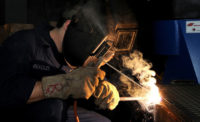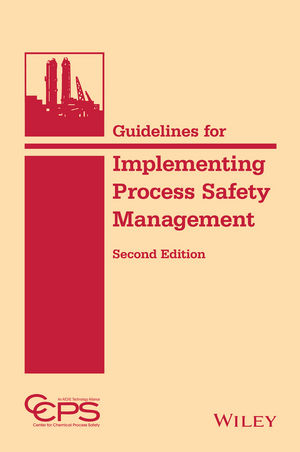Quick tips for balancing safety, productivity and quality

Credit: Getty Images
Manufacturing often finds itself up against challenges and pressures other industries do not. From a relatively strict regulatory environment to public health emergencies, global competition, emergent technologies and potential labor shortages, the manufacturing sector is always rolling with the punches and looking for avenues toward leaner operations and higher fortunes.
The most difficult balance to find here is the intersection of safety, productivity and quality. It’s not an impossible mission — companies can achieve this elusive balance if they start in the right place. Below are some tips for each part of this trinity. Additionally, heed reminders that focusing too heavily on only one of these items can hold back the entire business.
Think of safety, productivity and quality as your company’s prime directives. Here’s how to put each one of these three things first without sacrificing the other two:
1. Putting safety first
Many corporate representatives say safety is their No. 1 priority, even after an injury or worse tragedy has struck. For some of them, this might be true. But the more you think about safety as an irreplaceable part of your company’s three prime directives, the clearer it becomes that these components have to exist in proper proportion to one another.
Here are a couple of tips on how to invest in safety while balancing it with quality and productivity:
- Have long-term results in mind: Do you make short-term fixes to dangerous equipment or pay to replace them before they’ve risked anybody’s safety? Investing in company assets now might mean fewer worker well-being costs down the road, such as fewer hours lost and fewer workers’ compensation claims.
- Put people first: There are so many well-observed links between having a safe workplace and developing a productive, satisfied and engaged one as well. Investing in premises and worker safety means more confident, productive and committed employees. In turn, this leads to higher throughput and improved margins all around.
A company can call safety their top priority, but do their actions back it up? The steady demand for health and safety engineers suggests companies are looking to put actions to their words. Having dedicated health and safety officers at the table ensures employee well-being is always weighed against other priorities like productivity and profit.
2. Putting productivity first
Next up, we have to get to the bottom of productivity’s position in the three prime directives. Companies today need a culture that embeds safety and thoughtfulness in employees as readily as it does productivity. Saying we can’t have both is a false tradeoff. We can have all of the above, so long as we make it a point to:
- Build a culture with embedded values: It’s a company’s responsibility to train employees who promote safety and productivity simultaneously. If a business needs to bring new hands on deck or new machines online during peak demand, it doesn’t skimp on safety training or promote shortcuts. Instead, it doubles down on safety during windfalls to ensure the wins keep coming.
- Use automation in a prosocial way: Automation is an increasingly affordable and highly effective way to build a safer and more productive workplace. Relatively simple investments like automated guided vehicles make material transportation safer and quicker. Meanwhile, more complex automation systems like robotic arms and smart conveyors perform heavy work and keep employees out of harm’s way.
In a way, automation ties together each of the three prime directives we’re discussing here today. Automation is changing the very fabric of manufacturing and leading us through a Fourth Industrial Revolution.
Automation can take productivity and quality control to brand-new levels. Being pro-social about automation investments means these opportunities increase trust between workers and employers, as well as augment rather than replace human intuition and skill.
3. Putting quality first
It’s the companies building teams of invested and empowered employees that come out on top. Such organizations have 59% less turnover in their ranks. Invested workers are the ones who know how to turn out a high-quality product safely, time after time.
Want to know how quality can take care of itself when you have your other prime directive “ducks” in a row? Keeping turnover low with a strong safety- and productivity-minded culture keeps talent around for longer. You won’t find yourself starting from square one every few weeks because your skilled employees won’t be leaving before their time. That means a consistent product and company reputation over time, along with stable and predictable workflows.
Be sure your employees appreciate the fact that:
- Production goals won’t come at the expense of essential artistry: You’re in manufacturing because you take pride in a job well-done. Never compromising on quality and craftsmanship is a pillar of your values as an industry leader. Whatever your production goals happen to be, they can’t come at the expense of integrity. Make sure employees feel supported and listened to so they can do their finest work and solve any problems quickly.
- They’re a long-term investment for you: Employees want to know you’d rather have them on your payroll for longer, as you invest in their development as professionals, instead of letting them walk and replacing them. Employees who feel they’ve got long-term support at their backs are the ones who will lead you to further quality and productivity improvements. They’ll be the game-changers within your company.
Ultimately, product quality speaks to a company's overall stability and its working environment. Defects and product recalls are the result of a disordered culture or leadership with a poor balance between their priorities. In a sense, consistently high-quality work expresses a balance between productivity, safety and employee contentment and engagement.
Finding balance between the prime directives
Whenever you hear stories about companies bringing about watershed moments in their respective industries, their success always distills down to a few core components. These are the businesses with employees who design for quality because it’s simply a habit — and because it’s a matter of pride and company culture.
These organizations have few incidents and accidents to their names, plus well-designed workflows and product development cycles that bring productivity and quality into harmony. They also enjoy a stable supply of talent.
The holistic approach we’ve described here can help companies of all sizes bring their priorities into balance and become game-changing organizations of their own right.
Looking for a reprint of this article?
From high-res PDFs to custom plaques, order your copy today!








